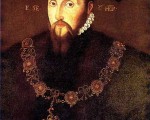
On 22 January 1552, between 8 and 9am, Edward Seymour, Duke of Somerset and former Lord Protector, was executed on Tower Hill.
[Read More...]
On 22 January 1552, between 8 and 9am, Edward Seymour, Duke of Somerset and former Lord Protector, was executed on Tower Hill.
[Read More...]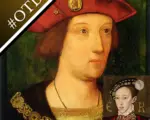
On this day in Tudor history, 2nd April, Henry VII’s eldest son, Arthur Tudor, Prince of Wales, died at Ludlow Castle; Anne Boleyn’s almoner, John Skip, preached a controversial sermon; and fourteen-year-old Edward VI fell ill with measles and smallpox…
[Read More...]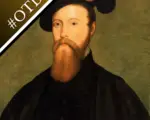
On this day in Tudor history, 20th March, Catholic priest and martyr Cuthbert Mayne was baptised; Thomas Seymour, 1st Baron Seymour of Sudeley and Edward VI’s uncle, was executed for treason; and Mary Bassett, translator and granddaughter of Sir Thomas More, died…
[Read More...]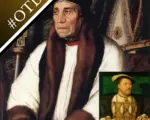
On this day in Tudor history, 15th March, Archbishop William Warham criticised Henry VIII in Parliament and was rewarded with foul language from the king; the Lady Mary (Mary I) publicly defied her half-brother Edward VI; and the imprisoned John Hooper was deprived of his bishopric…
[Read More...]
On this day in Tudor history, 10th March, John de Vere, 13th Earl of Oxford and a man who commanded Henry Tudor’s archers at the Battle of Bosworth, died; Henry VIII suffered a jousting accident jousting against his friend, Charles Brandon; and William Paulet, 1st Marquess of Winchester and a man who served Henry VIII, Edward VI, Mary I and Elizabeth I, died…
[Read More...]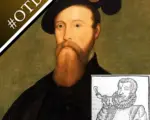
On this day in Tudor history, 5th March, Henry VII issued letters patent to explorer John Cabot (Giovanni Caboto), a bill of attainder listing 33 counts of treason was passed against Edward VI’s uncle, Thomas Seymour, and a Spanish physician introduced tobacco into Europe…
[Read More...]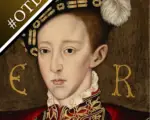
On this day in Tudor history, 20th February, Mary I was baptised, Lady Agnes Hungerford was hanged for murder, Edward VI was crowned king at Westminster Abbey, and Anne Herbert (née Parr), Countess of Pembroke, died…
[Read More...]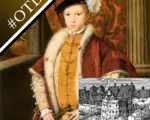
On this day in Tudor history, 19th February, Edward VI rode through the streets of London on his coronation procession, Margaret Douglas was informed of the murder of her son, Lord Darnley, and the Elizabethan playhouse, The Rose Theatre, opened on Bankside…
[Read More...]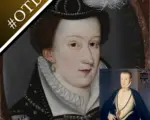
On this day in Tudor history, 17th February, Edward Seymour, King Edward VI’s uncle, was made Duke of Somerset, Mary, Queen of Scots, met and fell in love with Henry Stuart, Lord Darnley, and Henry Radcliffe, 2nd Earl of Essex, died…
[Read More...]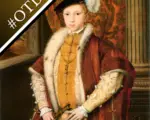
On this day in Tudor history, Queen Catherine of Aragon suffered a stillbirth, Henry VIII’s death was announced and Edward VI proclaimed king, and some more Gunpowder Plotters were executed…
[Read More...]
On this day in Tudor history, 6th October 1557, John Capon (also known as John Salcot), former Benedictine monk and Bishop of Salisbury, died, probably from influenza. He was buried in the choir at Salisbury Cathedral.
Capon appeared to have reformist leanings in the reigns of Henry VIII and Edward VI, but became a conservative Catholic again in Mary I’s reign, and was involved in the examination of those deemed to be heretics.
[Read More...]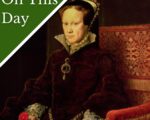
On this day in Tudor history, 5th October 1553, the first Parliament of Mary I’s reign met.
This Parliament repealed the “treason act” of Mary’s half brother Edward VI’s reign, passed an act declaring Mary’s legitimacy, repealed the religious legislation of Edward’s reign, and reinstated the Mass in Latin, celibacy of the clergy and ritual worship. It was as if the reformation of Edward VI’s reign had never happened.
[Read More...]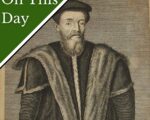
On this day in Tudor history, 4th October 1556, following five months of imprisonment, humanist, former royal tutor and former secretary of state Sir John Cheke made a public recantation of his Protestant faith in front of Queen Mary I and the royal court.
Cheke, who had tutored King Edward VI and served Queen Jane (Lady Jane Grey) as secretary of state, had been imprisoned in late July 1553 following Mary I’s accession for his part in putting Lady Jane Grey on the throne, but released in spring 1554. Mary I granted him a licence to go into exile abroad, which he did, travelling to Strasbourg, Basel, Padua and then back to Strasbourg.
[Read More...]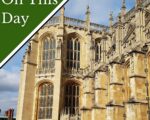
On this day in Tudor history, 3rd October 1559, Sir William Fitzwilliam, gentleman of King Edward VI’s privy chamber, died.
Fitzwilliam was a member of Parliament, a favourite of both the Duke of Somerset and Duke of Northumberland, and served Mary I as deputy chancellor in Ireland.
Here are a few facts about Sir William Fitzwilliam…
[Read More...]
On this day in Tudor history, 4th September 1550, Sir Thomas Paston, gentleman of the privy chamber in the reigns of Henry VIII and Edward VI, died.
Paston was a member of the famous Paston family of Norfolk.
Paston had named his wife Agnes as executrix, and their four-year-old son, Henry, was his heir.
[Read More...]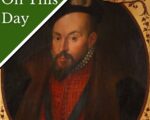
On this day in Tudor history, 26th August 1549, in the reign of King Edward VI, John Dudley, Earl of Warwick, received 1,000 mercenaries as reinforcements to fight the rebels of Kett’s Rebellion.
Kett’s Rebellion had begun in East Anglia in early July 1549. The rebels were unhappy with the enclosure of common land.
They attacked and took Norwich on 22nd July 1549 and William Parr, Marquess of Northampton, was sent with crown forces to win back the city. However, he was defeated. The Earl of Warwick was then sent to the area with a large army, which was bolstered with the arrival of the mercenaries on this day in 1549. The next day, Warwick’s forces met the rebels at the Battle of Dussindale. There were heavy losses on both sides, but Warwick was victorious. The rebellion had been brought to an end.
[Read More...]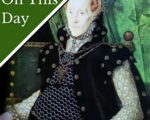
On this day in Tudor history, 25th August 1526, in the reign of King Henry VIII, Mildred Cecil (née Cooke), Lady Burghley, was born.
Mildred was the daughter of Sir Anthony Cooke, a scholar and the man who became Edward VI’s tutor, and his wife, Anne Fitzwilliam. Cooke educated his daughter himself, at home, providing her with the classical education usually reserved for boys.
Mildred is known not only for being the second wife of William Cecil, 1st Baron Burghley and Elizabeth I’s trusted minister, but for her humanist education, intelligence and fluency in Greek and Latin. Mildred also translated several works, including a Greek sermon by Basil the Great.
[Read More...]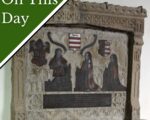
On this day in Tudor history, 21st August 1553, in the reign of Queen Mary I, courtier Sir Thomas Heneage died. He was buried in the chancel of the parish church at Hainton, Lincolnshire.
Heneage had served Henry VIII as groom of the stool and chief gentleman of the privy chamber, and went on to serve Edward VI as a gentleman of the privy chamber.
[Read More...]
On this day in Tudor history, 16th August 1549, in the reign of King Edward VI, landowner and administrator Sir Christopher More died. He was buried in St Nicholas’s Church, Guildford, in the Loseley Chapel.
More was a Justice of the Peace and sheriff during the reign of Henry VIII and was appointed to the guard of honour prepared for Anne of Cleves in late 1539.
Here are some facts about Sir Christopher More:
Sir Christopher More was born in around 1483 and was the son of fishmonger John More and his wife, Elizabeth.
By 1504, More was married to Margaret Mugge, who came from Guildford, and the couple had 12 children together. By 1535, Margaret had died and More had married Constance Sackville, widow of William Heneage.
In 1505, in the reign of King Henry VII, More was made a clerk of the exchequer, and More also purchased the office of alnager, i.e. an inspector of the quality and measurement of woollen cloth, in Surrey and Sussex.
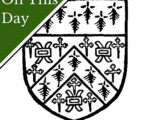
On this day in Tudor history, 11th August 1556, politician Sir John Kingsmill, a man who had been close to Thomas Cromwell and Thomas Wriothesley, died.
He served as a sheriff in the reign of Henry VIII and as a commissioner for the dissolution of chantries in 1548 to Edward VI.
Here are some more facts about Sir John Kingsmill:
[Read More...]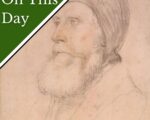
On this day in Tudor history, 3rd August 1549, in the reign of King Edward VI, Lord Russell marched his 1000 men from Honiton to Woodbury and set up camp for the night.
Russell was heading towards Clyst St Mary and the rebels of the Prayer Book Rebellion.
In 1549, the Book of Common Prayer was introduced. It was in English and it replaced the Catholic Mass. This change wasn’t embraced by all and there was trouble in Devon and Cornwall. The rebels called for the rebuilding of abbeys, the restoration of the Six Articles, the restoration of prayers for souls in purgatory, the policy of only the bread being given to the laity, and the use of Latin for the mass.
The rebels were defeated by the crown in a series of battles.
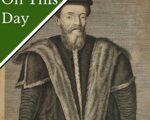
On this day in Tudor history, 27th (or 28th) July 1553, King Edward VI’s former tutor and principal secretary, thirty-nine-year-old Sir John Cheke, was sent to the Tower of London.
Edward VI had died on 6th July 1553 and his council followed his wishes, proclaiming Lady Jane Grey as Queen Jane…
[Read More...]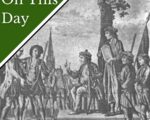
On this day in Tudor history, 8th July 1549, in the reign of King Edward VI, Kett’s Rebellion began.
Robert Kett, a Norfolk farmer, agreed to lead a group of protesters who were angry with the enclosure of common land. The protesters marched on Norwich, and by the time they reached the city walls, it is said that they numbered around 16,000.
[Read More...]
On this day in Tudor history, 17th June 1551, in the reign of King Edward VI, Sir George Blage (Blagge), courtier, diplomat, poet and good friend of Sir Thomas Wyatt the Elder, died at Stanmore in Middlesex. He is known for the Blage Manuscript, in which he collected the poetry of friends such as Wyatt.
In Henry VIII’s reign, Blage carried out diplomatic missions, was a member of the king’s privy chamber and fought in the king’s 1543-45 French campaign. He also served as Chief Steward and Bailiff of Maidstone, and Comptroller of the Petty Custom of London, and as a member of Parliament.
Blage was of the reformed faith and was arrested in July 1546 after he was heard denouncing the mass. Blage was condemned to death but, fortunately, was pardoned by Henry VIII.
[Read More...]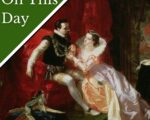
On this day in Tudor history, 4th June 1550, in the reign of King Edward VI, Robert Dudley married Amy Robsart.
[Read More...]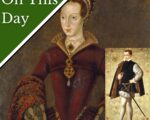
On this day in Tudor history, 25th May 1553, in the reign of King Edward VI, Lady Jane Grey married Lord Guildford Dudley at Durham Place, the Dudley family’s London residence.
Jane was the daughter of Henry Grey, Duke of Suffolk, and Frances Brandon, and granddaughter of Charles Brandon, Duke of Suffolk, and Mary Tudor, Queen of France, and Guildford was the son of John Dudley, Duke of Northumberland, and Jane Guildford, and the grandson of Edmund Dudley, one of Henry VII’s chief advisors.
[Read More...]